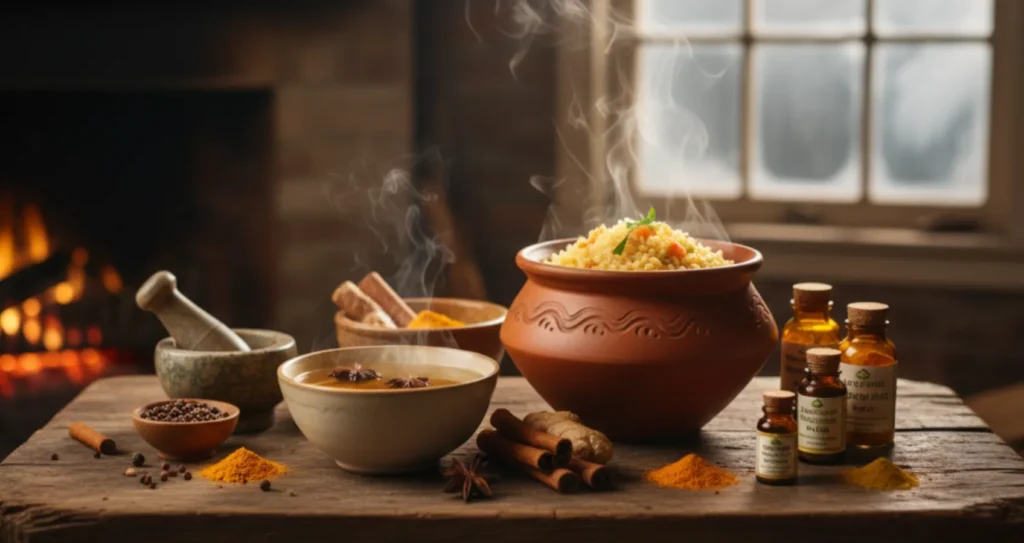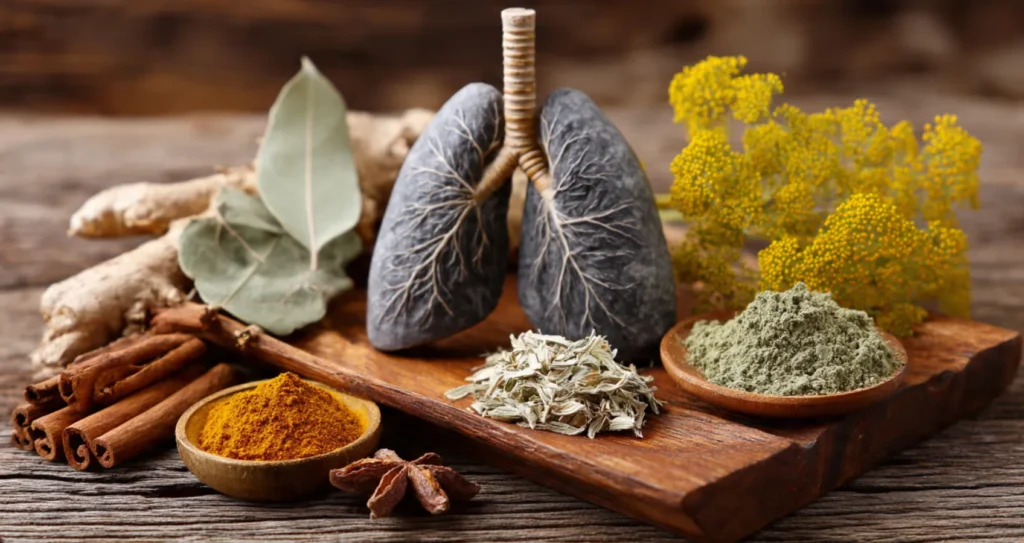Triphala is a completely balanced energetic formula, being neither too cold, nor too hot. When taken regularly over a long period, it gently effects the elimination and purification of Ama from the tissues of the entire body. The three fruits have been scientifically studied and confirm some of its known traditional benefits. These include the lowering of cholesterol, reducing high blood pressure, benefiting circulation, improving digestion and regulating elimination without causing any laxative dependency
Triphala: uniquely cleanses and detoxifies at the deepest organic levels without depleting the body’s reserves. This makes it one of the most valuable herbal preparations in the world
Triphala , as it is called, is the most popular Ayurvedic herbal formula of India, since it is an effective laxative that also supports the body’s strength. The constitution of vegetarian Hindus cannot tolerate harsh laxatives any more than vegetarians in other countries. Because of its high nutritional value,
Because of its high nutritional content, Ayurvedic doctors generally do not regard Triphalaas a mere laxative. Some of the scientific research and practical experience of people who have used it down through the ages has demonstrated that Triphala is an effective blood purifier that stimulates bile secretion as it detoxifies the liver, helps digestion and assimilation, and significantly reduces serum cholesterol and lipid levels throughout the body. Thus, it is regarded as a kind of universal panacea and is the most commonly prescribed herbal formula
The most popular herbal remedies in the health food industry are those that promote bowel movement. The reason is quite simple since a very common problem for so many individuals is constipation and bowel irregularity. Consider how tremendously valuable a formula is that not only regulates bowel movement but at the same time does the following:
- Improves digestion,
- Reduces serum cholesterol,
- Improves circulation (potentiates adrenergic function),
- Contains 31% linoleic acid,
- Exerts a marked cardio-protective effect,
- Reduces high blood pressure,
- Improves liver function,
- Has proven anti-inflammatory and anti-viral properties,
- Expectorant, hypotensive.
Triphala is also widely taken for all eye diseases including the treatment of conjunctivitis, progressive myopia, the early stages of glaucoma and cataracts. For these conditions, it is taken daily both internally as described above, as well as externally as an eye wash. Steep one tablespoonful of the powder or six tablets in an 8-ounce glass of water overnight. In the morning, strain the infusion through a clean cloth. The resultant tea is used to sprinkle over the eyes or used in an eyewash with an eyecup that can be readily purchased at most drug stores. One can drink the remainder in one or two doses, morning and evening. Taken in this way for at least three months, Triphala becomes an herbal eye tonic
There are two ways to take Triphala as a powder or tablet. Traditionally Triphala is taken as a churna or powder. One would stir in two or three grams of the powder with warm water and consume the entire amount each evening or divided into three doses throughout the day. Since for most it does not possess a flavour that one would look forward to experiencing, it is convenient that Triphala is available in tablet or capsule form. Generally, the dose is from two tablets 1-3 times daily or four to six tablets one time daily. Children may only require one or two tablets in the evening.
The larger dose is more laxative while the smaller dose tends to be more gradually blood purifying. A smaller dose might be one or two tablets three times daily. One should increase or decrease the dose according to one’s bowel movements. Since there are no problems in using Triphala the dose can be adjusted upwards from the suggested amount.
The ingredients of Trifala
- Haritaki -Terminalia chebula
- Bibhitaki – Terminalia bellirica
- 3) Aamalaki- Emblica officinalis
“Pathya Vibhitam Dhatrinam Falaihi Syat Trifala Samaihi / Falatrikam Cha Sa Vara Cha Prakirtita/” Bha Pra This is also known as ‘varachoorna’
Dr. Smita, B.A.M.S Travancore Ayurveda Madinaguda Hyderabad












